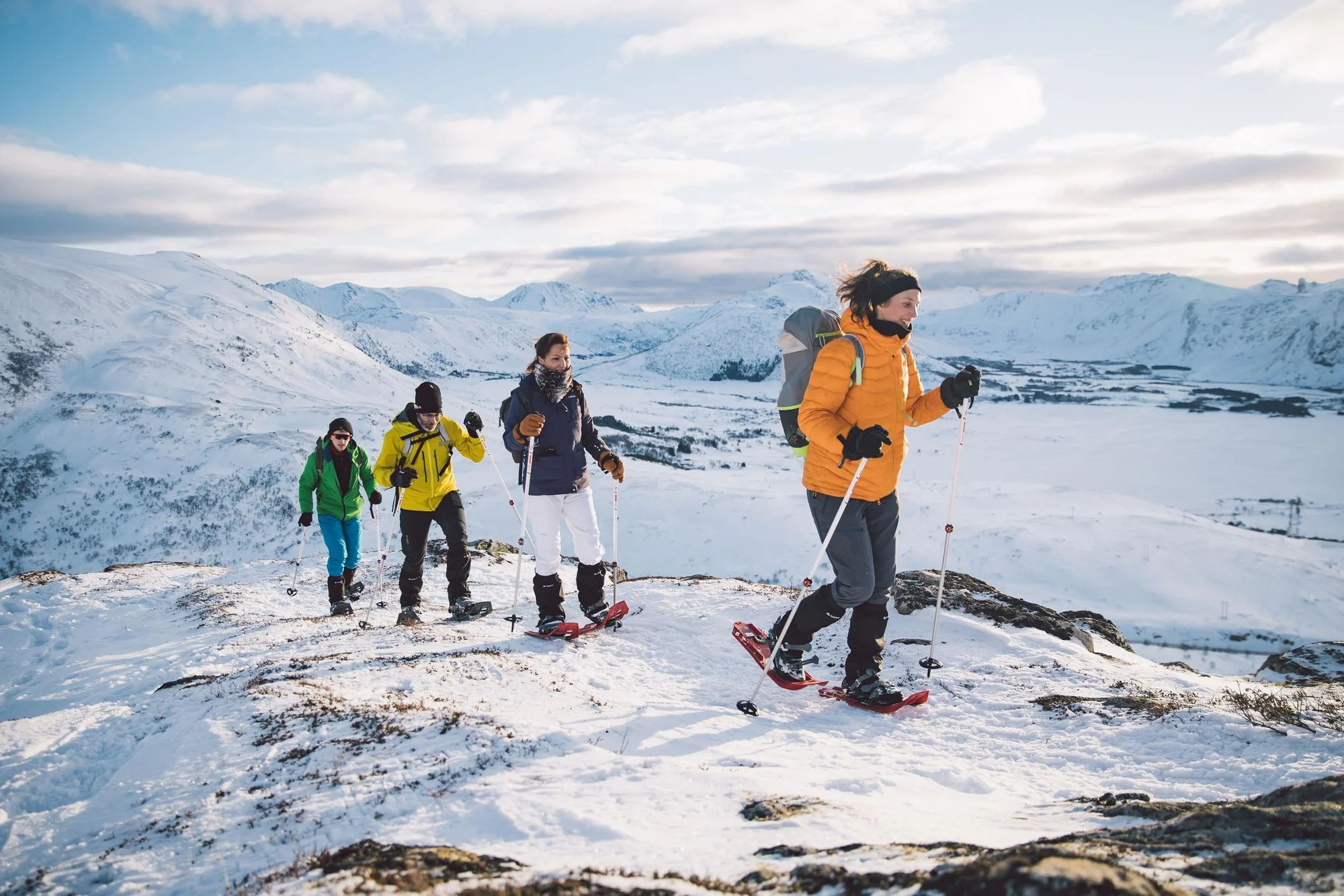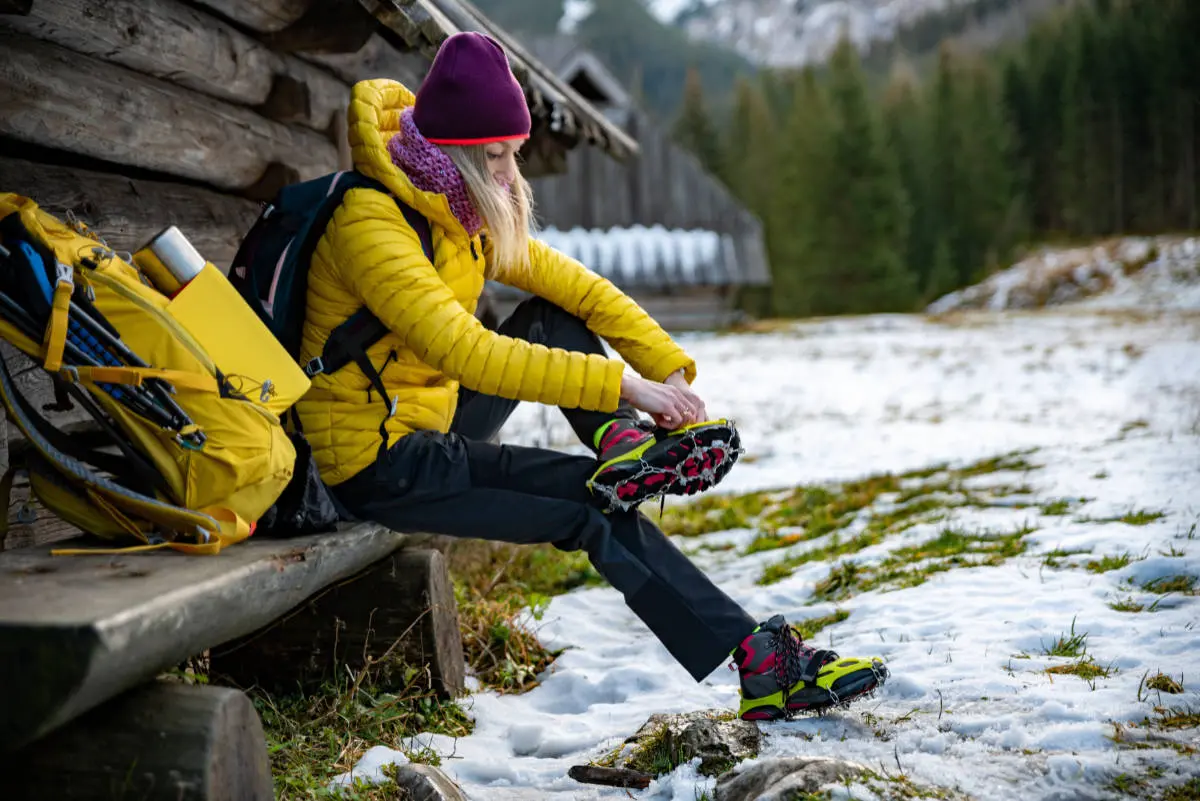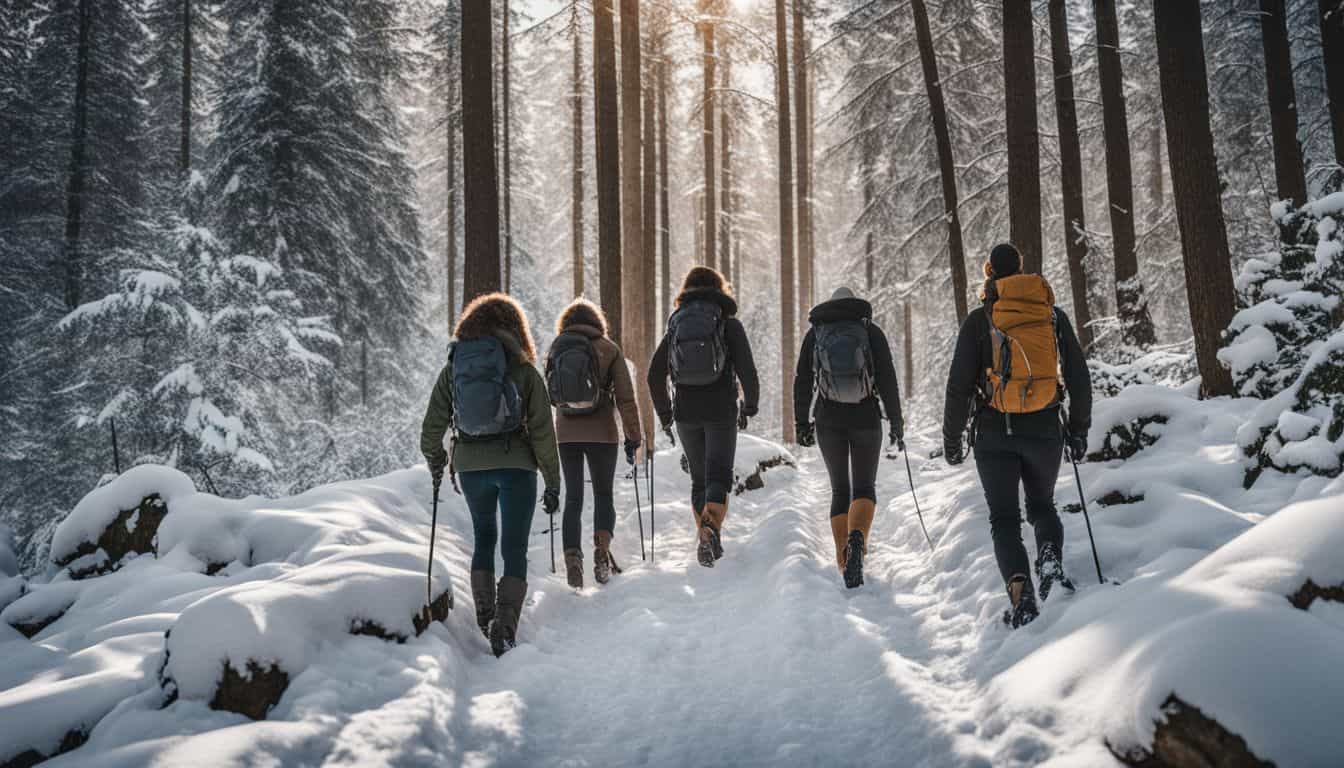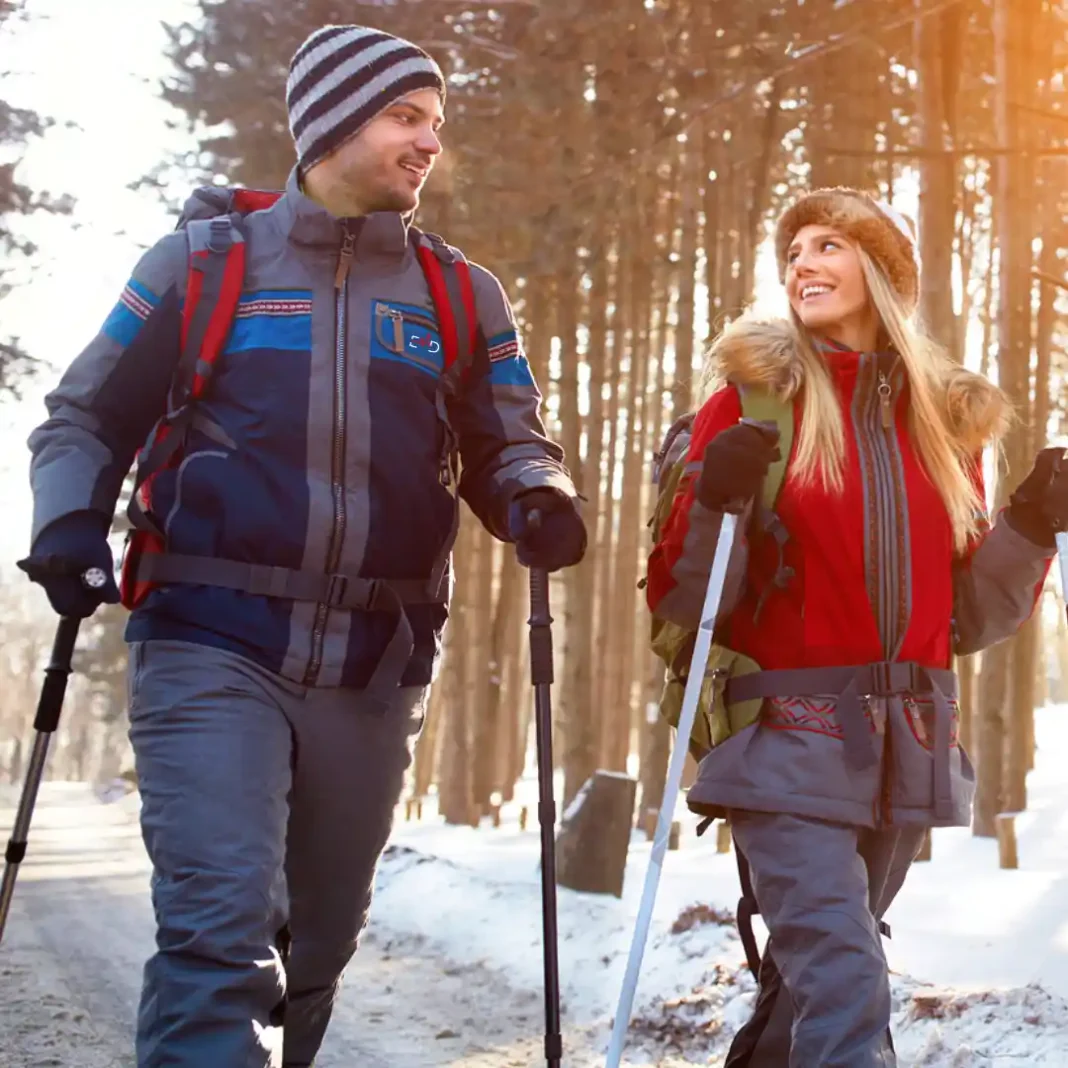Exercise Daily – Winter hiking is one of the most rewarding ways to stay active and connected to nature during the colder months. Whether you’re an experienced hiker or new to winter adventures, there’s something magical about exploring snow-covered trails with crisp air and stillness around you. If you’ve been itching to get outdoors, winter hiking could be just the activity you need. However, it’s essential to approach it with the right gear, knowledge, and mindset. This guide will cover everything you need to know about staying active outdoors during winter, from winter hiking tips to essential gear and advice on staying warm.
Introduction to Winter Hiking
Winter hiking offers a fresh perspective on nature and the outdoors. The landscape is transformed by snow, creating an entirely different environment compared to the typical summer hike. While winter hiking requires more preparation than hiking in warmer months, the rewards are well worth it. The tranquility of snow-covered mountains, peaceful winter forests, and the satisfaction of a challenging yet invigorating experience can provide a sense of fulfillment that is unique to this time of year.
Why Winter Hiking is Worth It
When most people think of hiking, they envision a summer adventure filled with sunshine and clear skies. However, hiking in winter has its appeal, offering a serene and quiet atmosphere that’s absent during the warmer months. Picture yourself trekking through a pristine, snow-covered landscape where the only sounds are the crunch of snow beneath your boots and the wind whispering through the trees.
Winter hiking not only brings a sense of peace and tranquility but also provides numerous physical and mental health benefits. It’s a great way to stay active during the colder months, helping you burn calories, boost your mood, and build endurance. The crisp winter air can be refreshing, and the snowy terrain offers an opportunity to challenge your body in new ways. Additionally, the softer ground in winter can be gentler on your joints, making it an excellent alternative to other high-impact exercises.

The Essentials of a Winter Hike
Before heading out for a winter hike, it’s crucial to pack the right gear. Proper preparation ensures that you stay warm, dry, and safe while maximizing your enjoyment of the winter environment. Below, we discuss the essential items every winter hiker should carry.
10 Essentials for Winter Hiking
To ensure your winter hike is safe and enjoyable, consider bringing the following 10 essentials:
Waterproof Shell
A waterproof jacket or coat will protect you from rain, snow, or wind, keeping you dry and comfortable in unpredictable weather.
Insulating Layer
A warm mid-layer, such as fleece or down, traps body heat and keeps you warm.
Headlamp
Winter days are shorter, so a headlamp is essential for visibility, especially if you’re out after sunset or in low-light conditions.
First Aid Kit
Always be prepared for minor injuries or accidents. A well-stocked first aid kit is a must-have for any outdoor adventure.
Navigation Tools
A map, compass, or GPS system ensures that you stay on track and don’t get lost in unfamiliar terrain.
Extra Clothing
Pack an extra layer or two in case you get wet or cold. Extra socks and gloves are particularly helpful in winter.
Food and Water
High-energy snacks (such as granola bars or trail mix) and plenty of water will help you maintain your energy levels.
Hiking Poles
Poles provide extra stability and balance, especially on icy or uneven terrain.
Knife or Multi-tool
A multi-tool can be invaluable in an emergency, whether you need to cut something, fix gear, or perform other tasks.
Fire Starter
A reliable fire starter can be essential if you need to warm up or dry out in case of an emergency.

Waterproof Gear: Your First Line of Defense
When it comes to winter hiking, staying dry is crucial. Wet clothing can quickly lead to hypothermia, which is dangerous in cold conditions. Therefore, waterproof gear is a necessity.
Waterproof Clothing and Footwear
Invest in a waterproof jacket and pants to protect yourself from the elements. Your jacket should be both waterproof and windproof, with good breathability to prevent moisture buildup from sweat. Waterproof boots are equally important. Winter hiking boots should be insulated, waterproof, and designed to handle snow and ice. Ensure that your boots have a good grip to help prevent slips on icy trails. Don’t forget waterproof gaiters to keep snow from entering your boots.
Insulating Layers: Layering for Warmth and Comfort
Layering your clothing is the most effective way to stay warm while hiking in winter. The goal is to trap heat close to your body without causing you to overheat.
Base Layer
Your base layer should be made from moisture-wicking materials like merino wool or synthetic fabrics. These materials draw moisture away from your skin, preventing it from cooling you down. Avoid cotton, as it retains moisture, which can make you colder.
Mid Layer
The mid-layer acts as an insulating barrier to retain your body heat. Fleece, down, or synthetic insulation materials are excellent choices for this layer. Choose a mid-layer that is breathable and allows moisture to escape while keeping you warm.
Outer Layer
The outer layer is your shield against wind, rain, and snow. A waterproof shell or rain jacket is a must, as it will protect your insulating layers and prevent you from getting wet. Make sure this layer is breathable to prevent you from getting too sweaty inside.
Key Gear to Bring on a Winter Hike
In addition to the essentials mentioned above, several key pieces of gear can enhance your winter hiking experience.
Winter Hiking Boots
Your feet are the foundation of your hike, so having the right boots is crucial. Look for insulated, waterproof boots that offer a sturdy grip for traction on icy or snowy terrain. Boots with a high ankle design will provide better support, especially in deep snow or on uneven ground.
Socks and Gaiters
When choosing socks for winter hiking, always opt for wool or synthetic options. These materials will keep your feet warm and dry, unlike cotton socks, which can retain moisture and lead to cold feet. Gaiters are also useful for keeping snow out of your boots and protecting your legs from getting wet.
Hiking Poles
Hiking poles are essential for stability, especially on slippery or uneven surfaces. They can help reduce the impact on your knees during ascents and descents, and they provide extra balance on icy trails. Adjustable poles are a great option, as you can modify their length depending on the terrain.
Tips for Staying Warm During a Winter Hike
It’s important to not only have the right gear but also to use it effectively. Here are some tips for staying warm while out on a winter hike:
Insulate and Layer Properly
The key to staying warm is layering effectively. Your base layer should wick moisture away from your skin, your mid-layer should insulate, and your outer layer should protect you from the elements. Be mindful of overheating—if you start sweating, it’s important to remove layers to prevent becoming too cold once the sweat cools.
Keep Your Feet Dry and Warm
Cold, wet feet can quickly ruin a winter hike. Make sure to wear moisture-wicking socks and waterproof boots. Avoid walking through deep snow for long periods, as wet feet can lead to frostbite. Take breaks to warm your feet and dry them out if needed.
Stay Hydrated and Nourished
Even in winter, it’s essential to stay hydrated. Cold temperatures can make it easy to forget to drink water, but dehydration can still occur. Bring a water bottle that won’t freeze, and pack high-energy snacks like nuts, chocolate, and energy bars to keep your energy levels up throughout the hike.
Be Mindful of the Weather
Winter weather can change rapidly, so it’s important to stay informed about the forecast and be ready for sudden shifts in temperature or conditions. Always carry extra clothing in case the weather turns worse, and be prepared to turn back if conditions become unsafe.

Conclusion
Winter hiking is a rewarding and refreshing way to stay active while immersing yourself in nature. With the right preparation and gear, you can enjoy the winter wilderness safely and comfortably. By layering properly, bringing essential gear, and following safety tips, you can ensure that your winter hiking experiences are both enjoyable and safe. So, grab your boots, bundle up, and embrace the beauty and challenge of a winter hike!
FAQs – Winter Hiking: Staying Active Outdoors
Q: What is the best time to go on a winter hike?
A: The best time for winter hiking is during the daylight hours, as daylight is limited in the winter. Aim to start early and finish before sunset to ensure you’re not caught in the dark.
Q: How do I prevent frostbite during a winter hike?
A: Frostbite occurs when your skin freezes due to extreme cold. To prevent it, keep your skin covered, wear appropriate layers, and protect your extremities with winter hiking gloves and insulated socks.
Q: Can I use my summer hiking boots for winter hiking?
A: Summer hiking boots are generally not suitable for winter hikes. For cold weather, you need waterproof boots with insulation and good traction to handle snowy or icy conditions.
Q: How do I stay warm if I get wet during a winter hike?
A: If you get wet, change into dry clothes as soon as possible, particularly your base layer and socks. Having an extra set of clothes in your pack is always a good idea for emergencies.
Q: Are hiking poles necessary for winter hiking?
A: Hiking poles are highly recommended for winter hikes because they help with stability on snowy or icy trails. They can also help reduce strain on your knees, especially during downhill sections.




